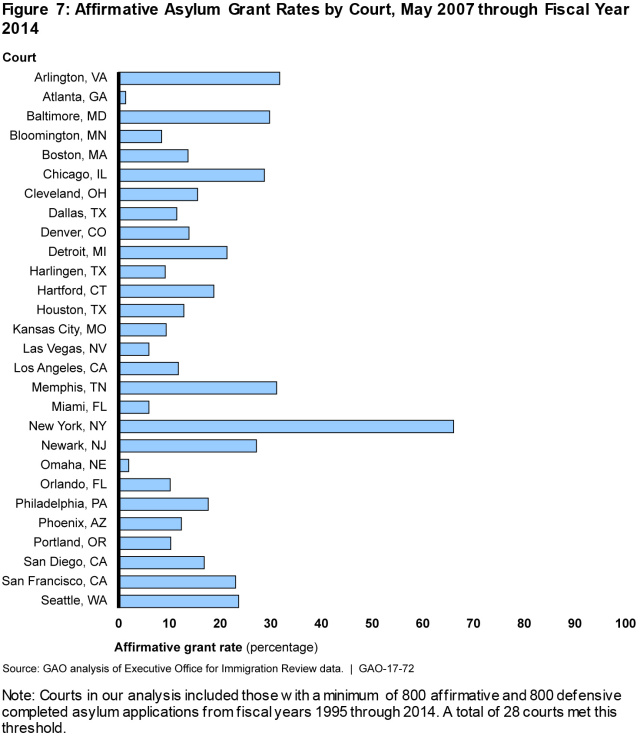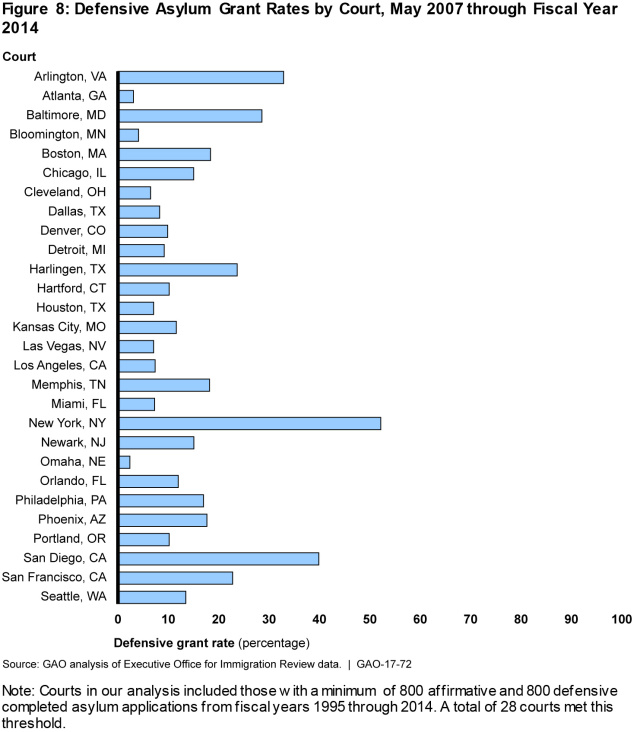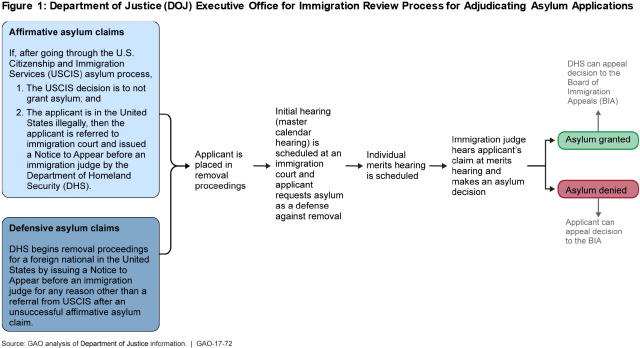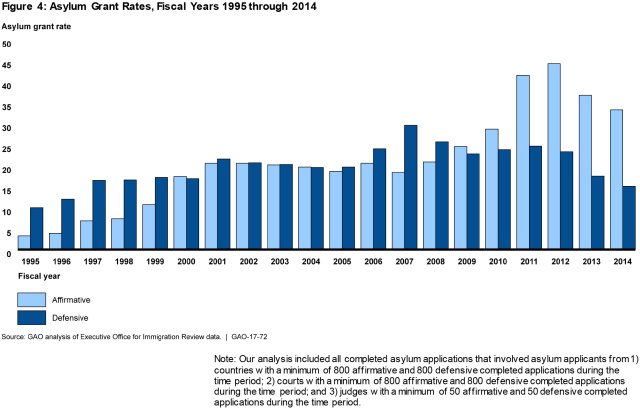Asylum Seekers
Each year, tens of thousands of foreign nationals in the United States apply for asylum, which provides refuge for those unable or unwilling to return to their home country for various reasons. For example, they may have faced past persecution in their country, or fear future persecution based on their race, religion, nationality, social status, or political opinion.
But the outcomes of asylum applications in immigration courts can vary significantly. Today’s WatchBlog discusses the U.S. asylum application process and the factors related to application outcomes.
Two ways asylum is granted
There are two types of asylum claims decided by immigration courts within the Department of Justice:
- An affirmative claim is for when someone applies for—but is not granted—asylum by U.S. Citizenship and Immigration Services. The person can then be referred to an immigration court if he or she appears to not have valid immigration status.
- A defensive claim is for when a foreign national in the United States is placed in removal proceedings, and claims asylum as a defense against being removed.
(Excerpted from GAO-17-72)
Outcomes of asylum applications
If granted asylum, an applicant may be eligible for federal, state, and local benefits; is authorized for employment; and can become a U.S. lawful permanent resident after one year.
We analyzed 595,795 affirmative and defensive asylum applications heard by judges at 28 (of 58) immigration courts between 1995 and 2014, and found that asylum grant rates varied over time. Grant rates for affirmative applications ranged from 21 to 44 percent and grant rates for defensive applications ranged from 15 to 26 percent, between 2008 and 2014.
(Excerpted from GAO-17-72)
Grant rates also varied across judges and courts based upon location. For example, immigration court judges in New York, New York, granted over 50 percent of both affirmative and defensive applications, while judges in Atlanta, Georgia, and Omaha, Nebraska, granted less than 5 percent of both types of applications. And within the New York court, judges granted asylum from a minimum of rate of 22 percent to a maximum rate of 83 percent for affirmative applicants.
 |
 |
(Excerpted from GAO-17-72)
From our statistical analyses, we also identified a variety of factors that were associated with asylum grant rates. As one example, applicants were more likely to be granted asylum if they were represented by legal counsel—at a rate 3.1 times higher for affirmative applications and 1.8 times higher for defensive applications.
To learn more about the legal resources immigration courts offer to asylum applicants and our recommendation on how immigration courts can better measure the impact of these resources, check out our full report.
- Comments on GAO’s WatchBlog? Contact blog@gao.gov
GAO Contacts
Related Products

GAO's mission is to provide Congress with fact-based, nonpartisan information that can help improve federal government performance and ensure accountability for the benefit of the American people. GAO launched its WatchBlog in January, 2014, as part of its continuing effort to reach its audiences—Congress and the American people—where they are currently looking for information.
The blog format allows GAO to provide a little more context about its work than it can offer on its other social media platforms. Posts will tie GAO work to current events and the news; show how GAO’s work is affecting agencies or legislation; highlight reports, testimonies, and issue areas where GAO does work; and provide information about GAO itself, among other things.
Please send any feedback on GAO's WatchBlog to blog@gao.gov.






